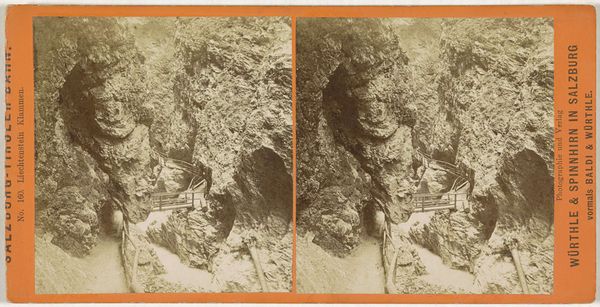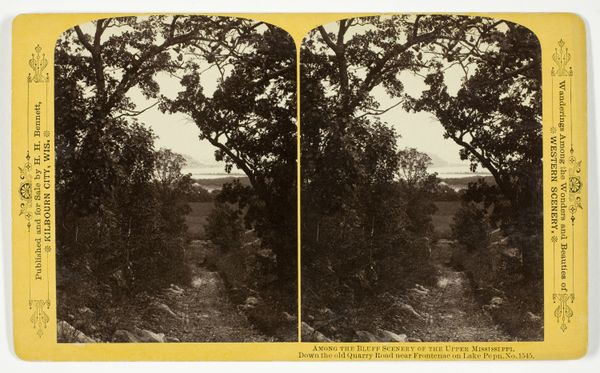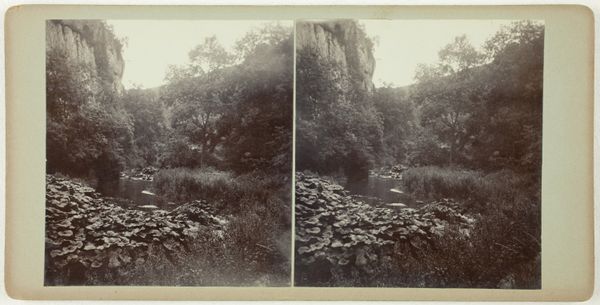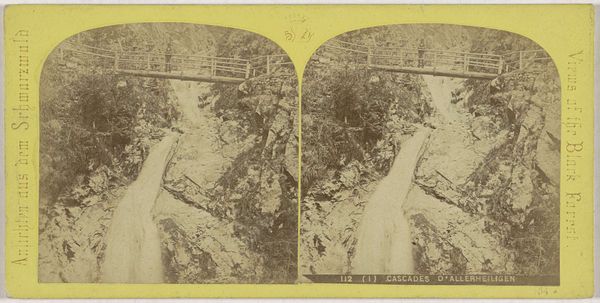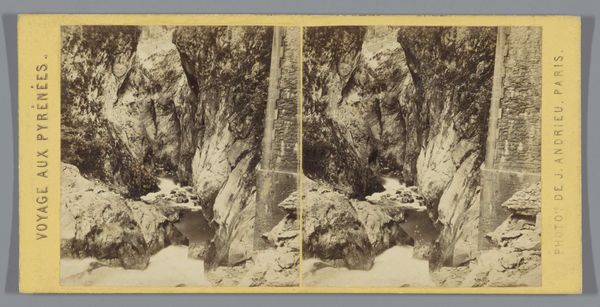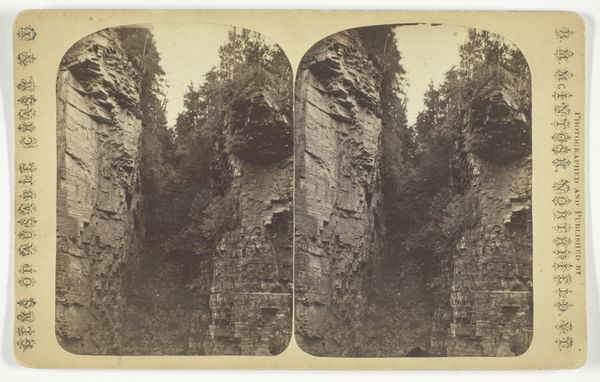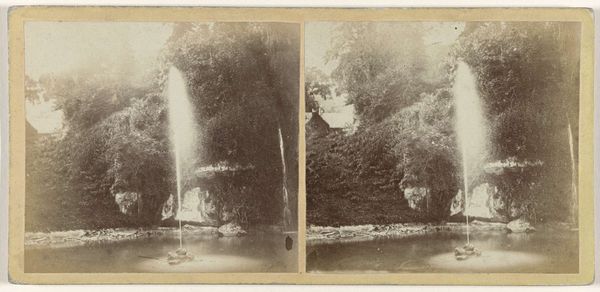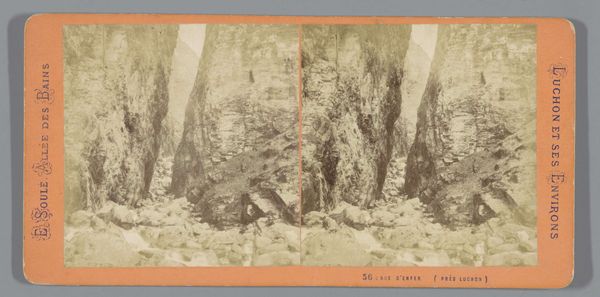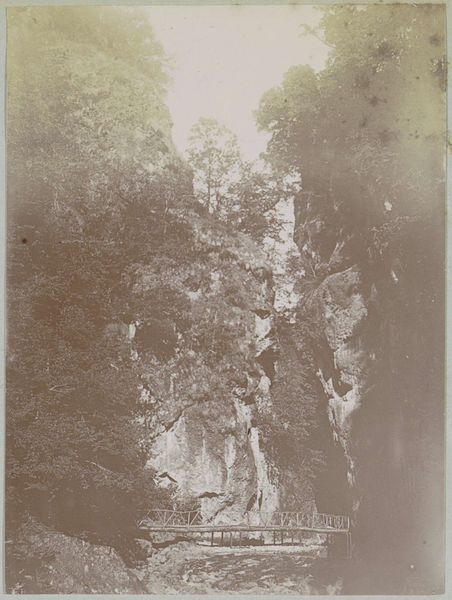
Kitzloch Fall in the Wild Ravine of the Ache, Tyrol, Austria 1898
0:00
0:00
print, photography
#
pictorialism
# print
#
landscape
#
photography
Dimensions: 8.2 × 7.7 cm (each image); 8.8 × 17.8 cm (card)
Copyright: Public Domain
Editor: This is "Kitzloch Fall in the Wild Ravine of the Ache, Tyrol, Austria," a stereograph made in 1898. It seems to be a print from a photograph. There's a slightly dreamy, romantic feel to it, maybe because of the muted tones. I’m curious, what aspects of this artwork stand out to you? Curator: Looking at the print’s materiality is vital. It was mass-produced; it’s a commercial product intended for broad consumption. That affects our interpretation. The image itself romanticizes nature, but the print itself signifies industrialized leisure and tourism. Do you see the human interventions in this supposed "wild" scene? Editor: You mean like the fences and paths along the waterfall? It's clearly designed to be safely accessible. Curator: Exactly! And who is granted that access? The emerging middle class, with disposable income to spend on travel and images. It's a crafted experience mediated by both the constructed pathway and the photographic print. The material making and circulation are intrinsically related to the social context. Think of the labor involved in logging the lumber to construct pathways to photograph a site like this. Editor: That’s a completely different angle than I initially considered. I was so focused on the beauty of the waterfall that I didn’t think about how manufactured the whole experience, including the photograph itself, really is. Curator: Consider this a visual commodity and extension of industrial society that packages up nature. A form of consumerism in it's own way! Editor: I guess I was focused on the nature depicted rather than the industry producing it. Thank you, it's really valuable to think about art this way.
Comments
No comments
Be the first to comment and join the conversation on the ultimate creative platform.

